Lot 24
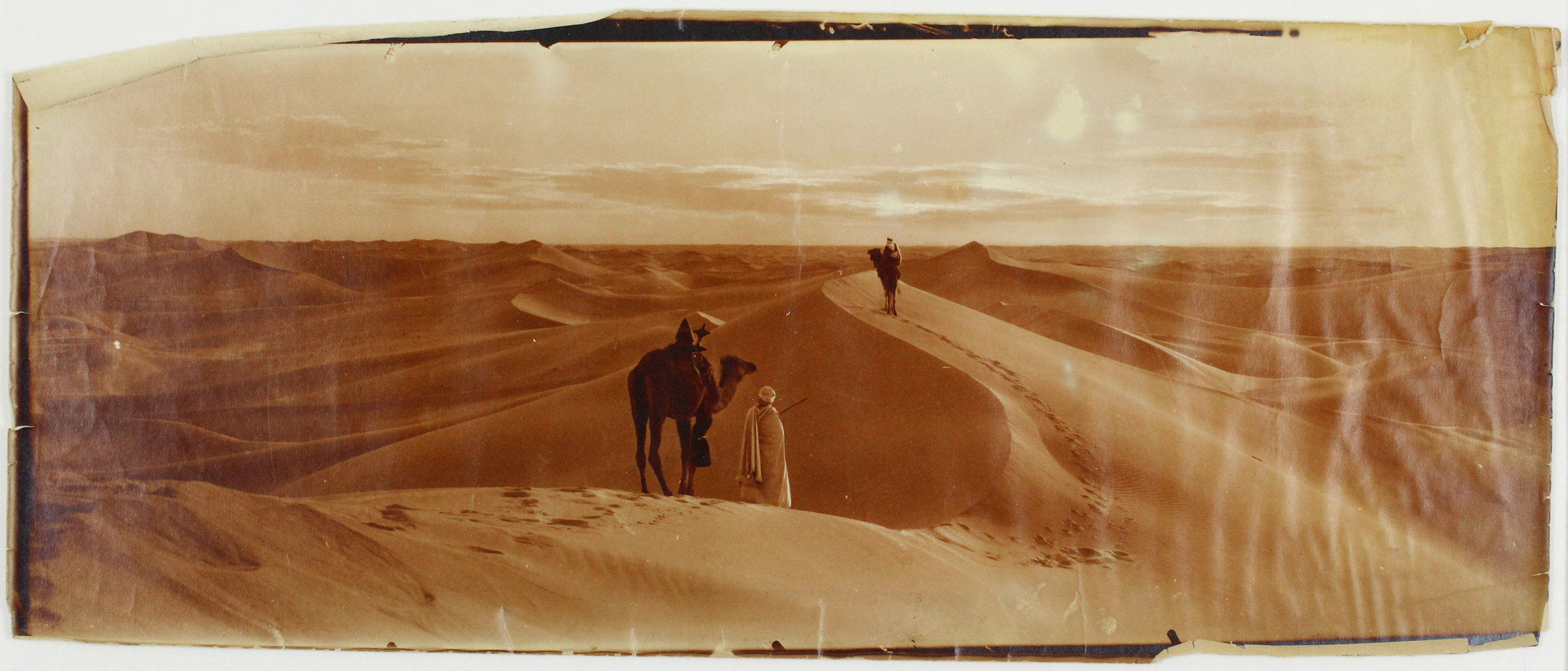
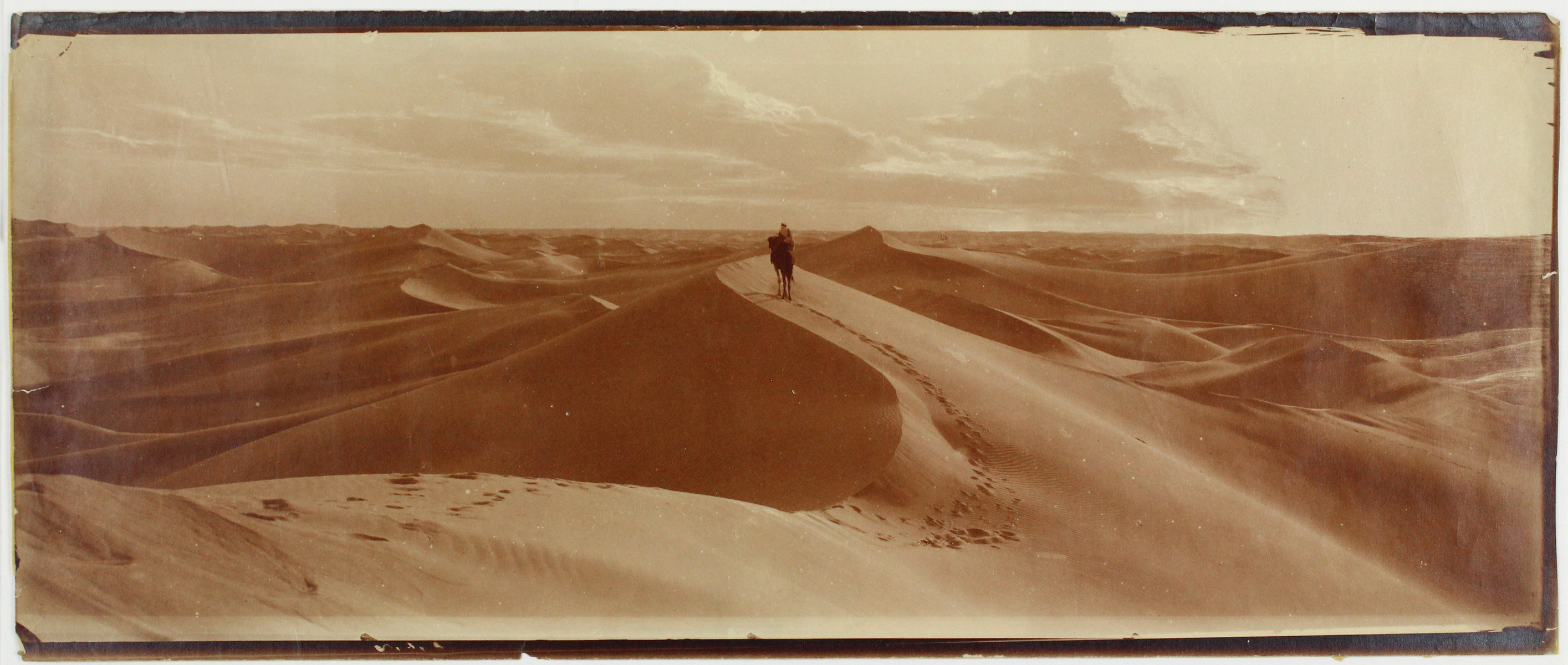
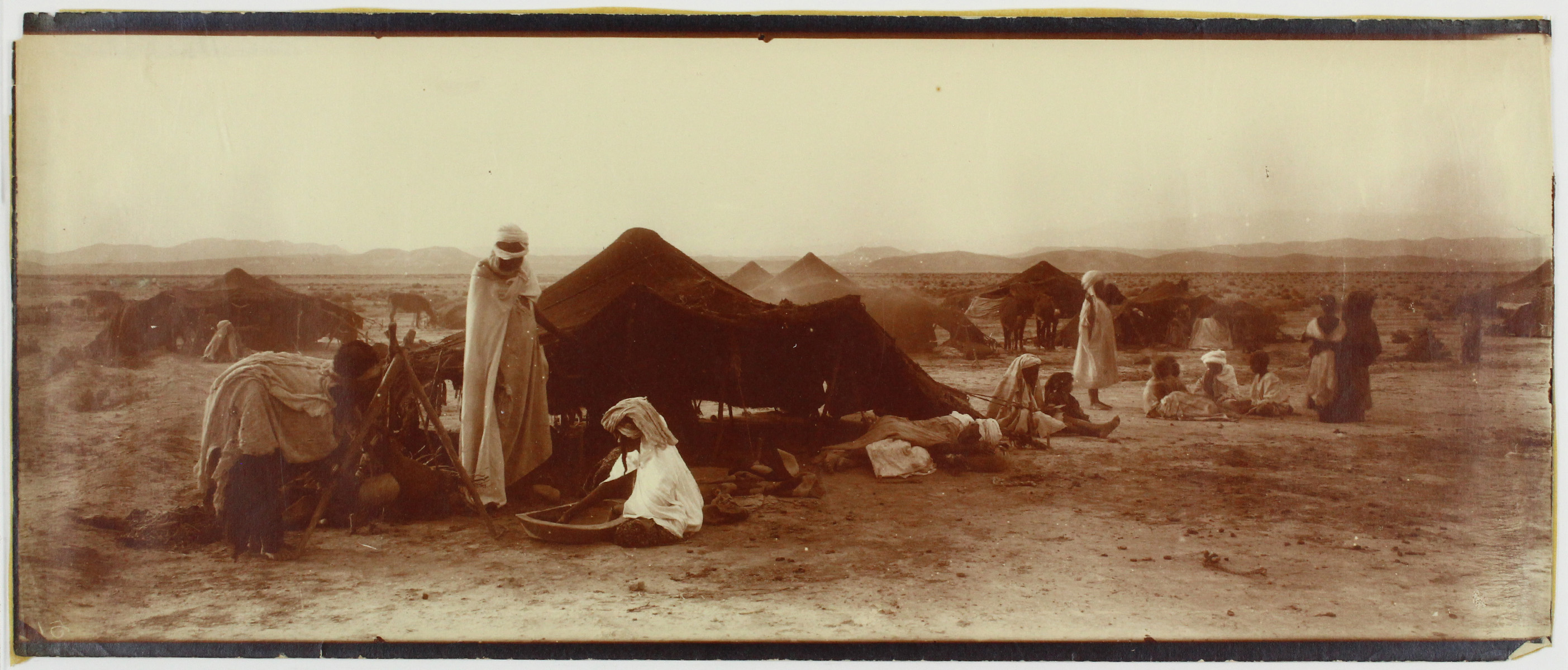
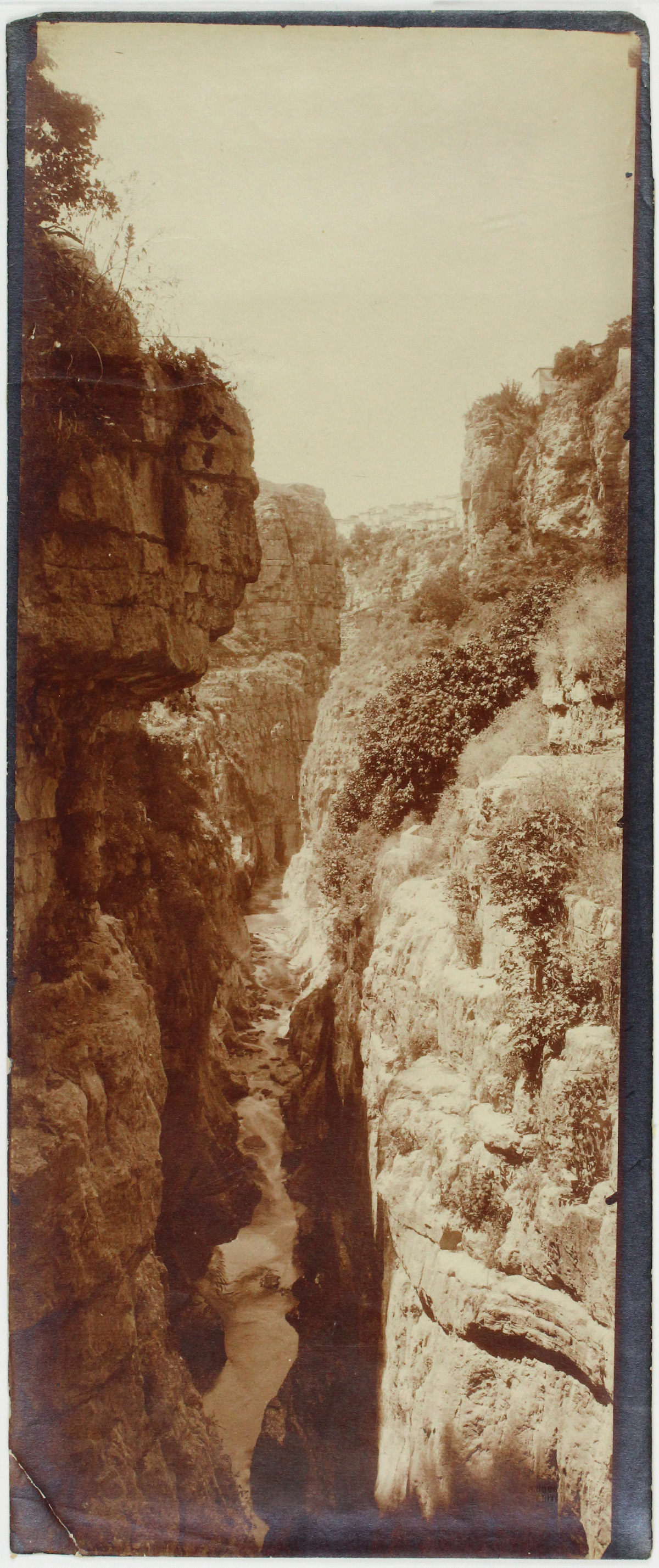
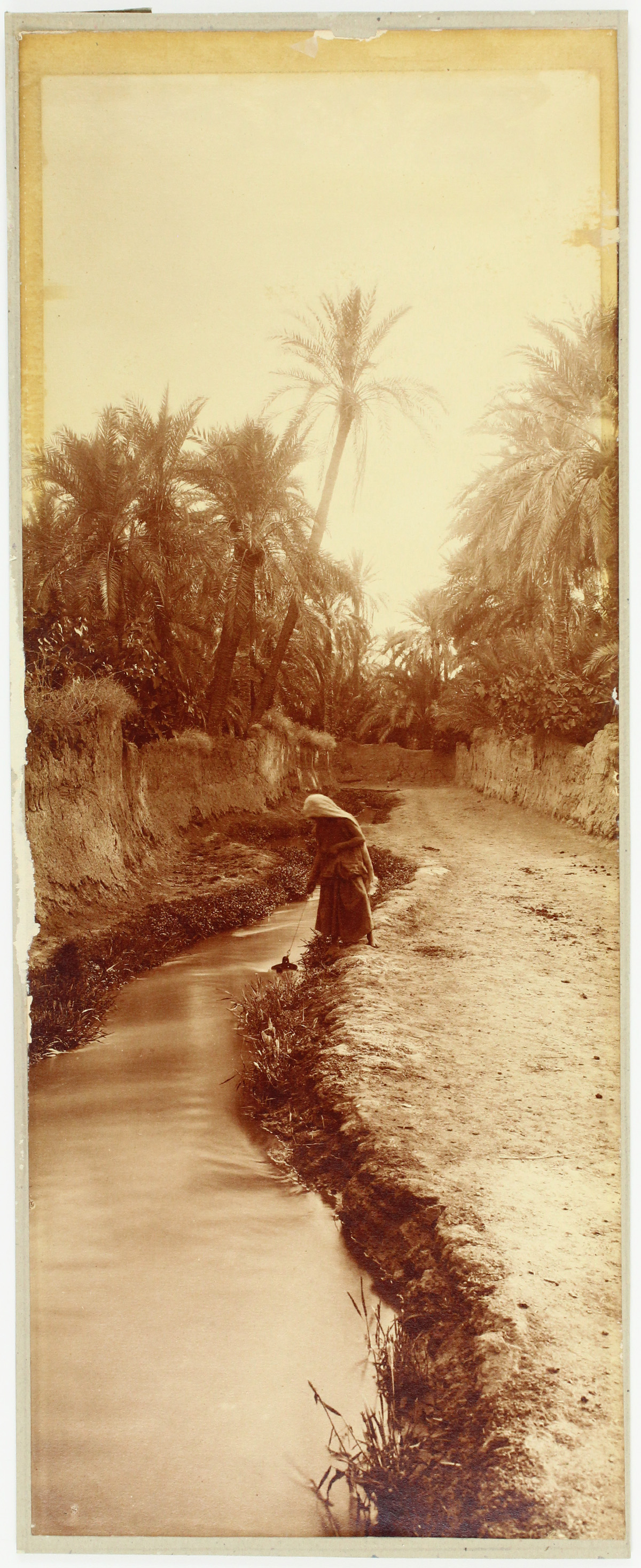
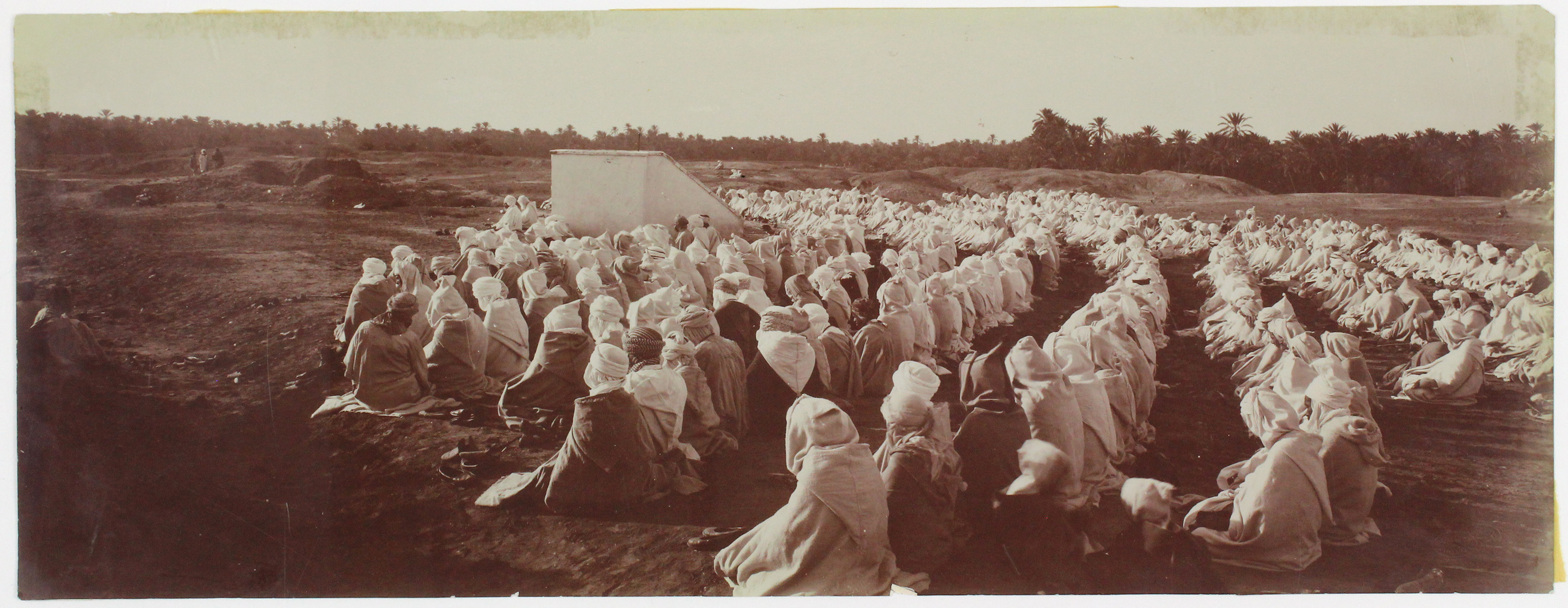
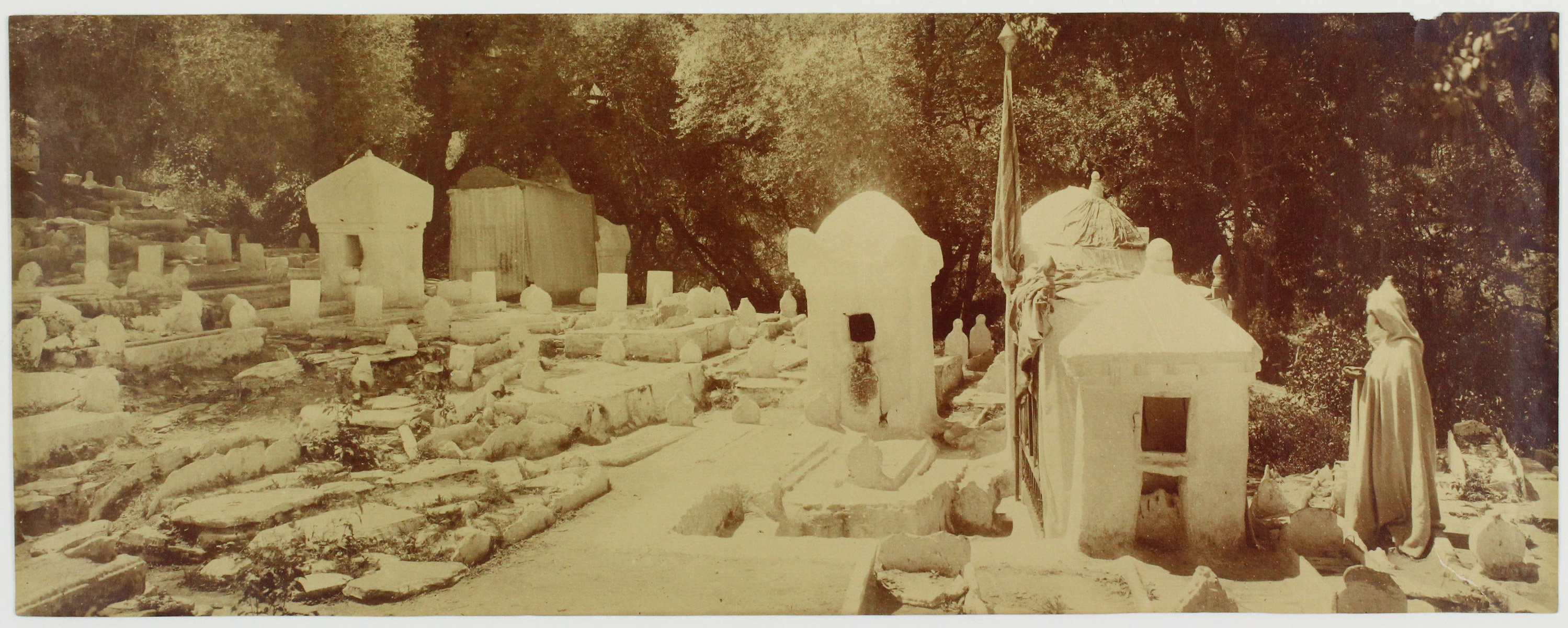
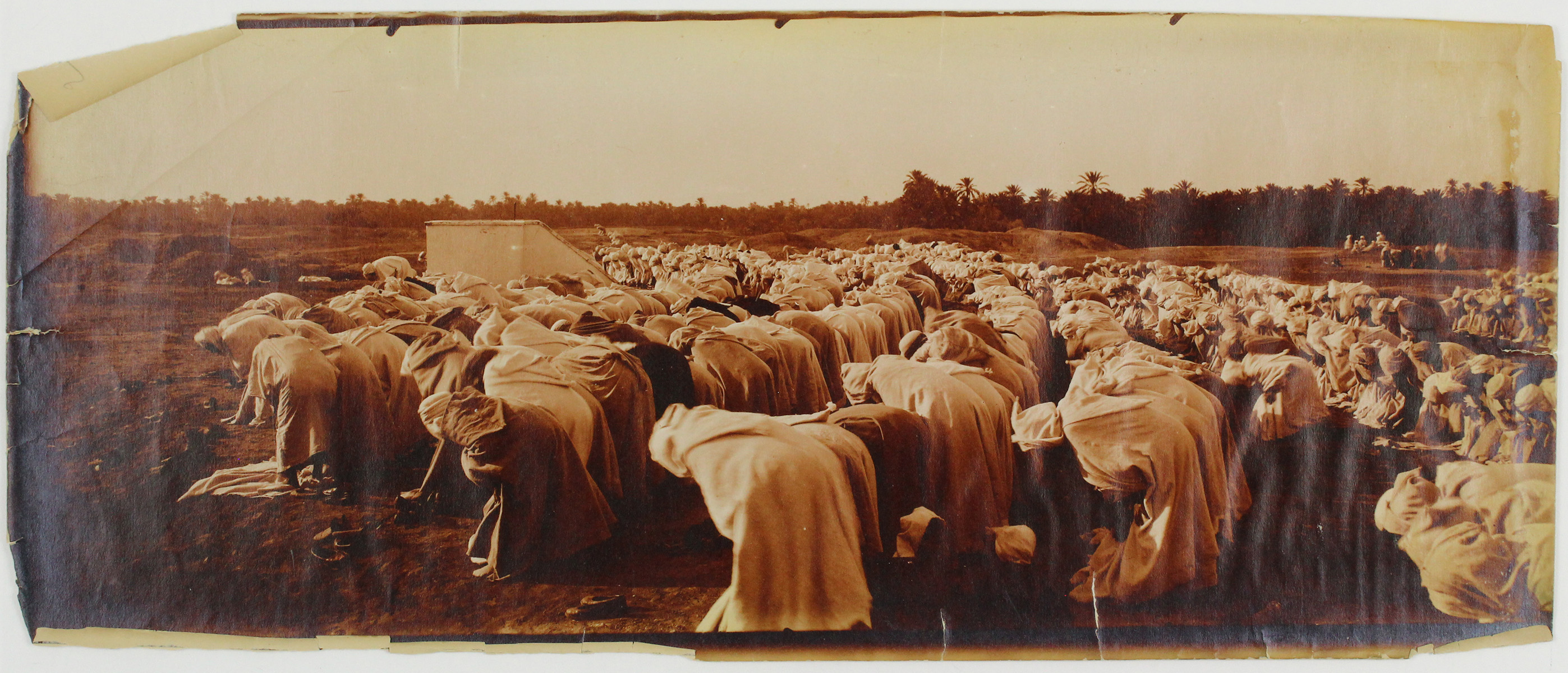
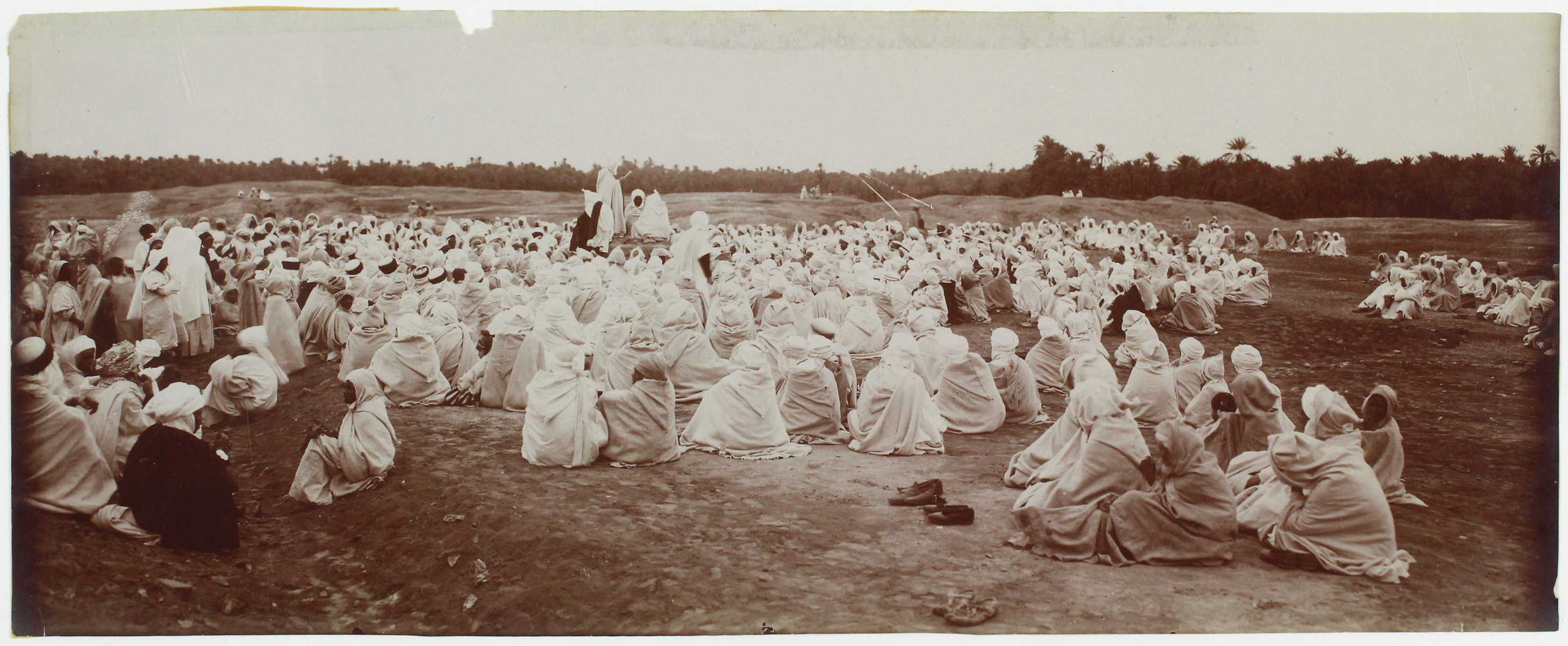
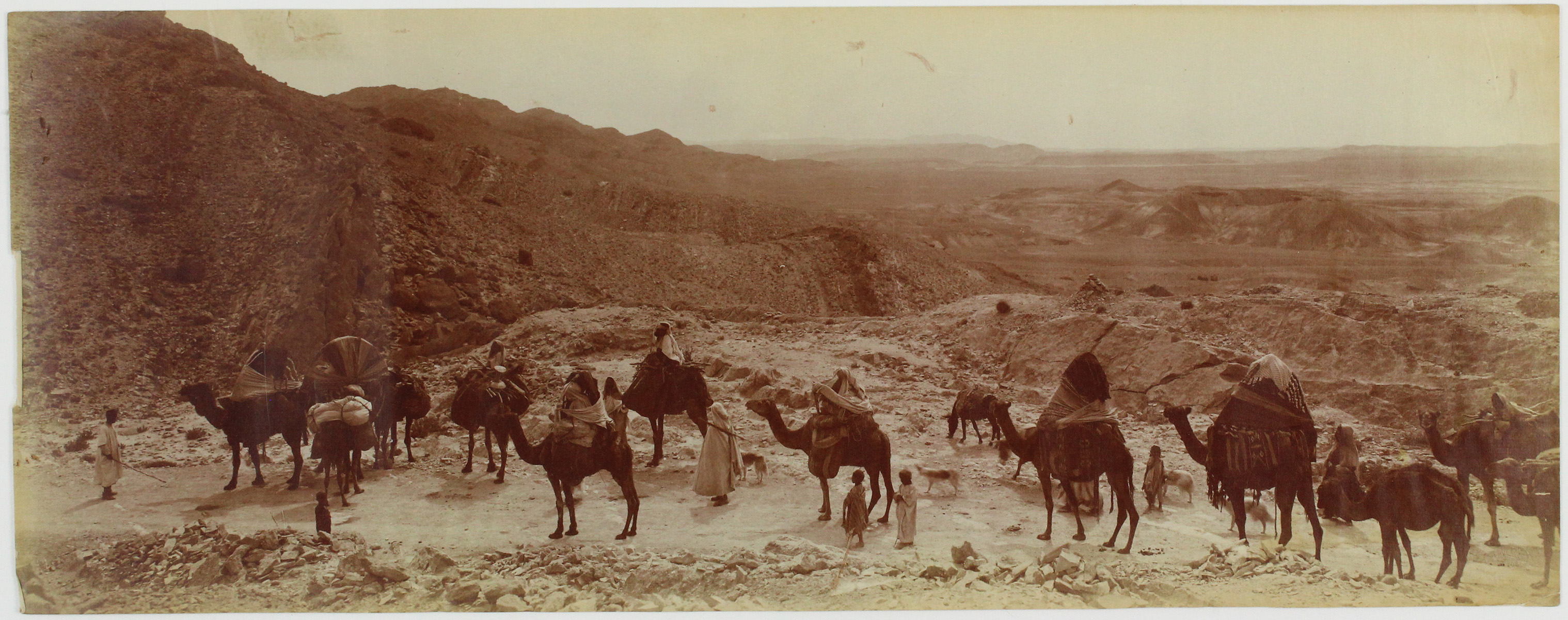
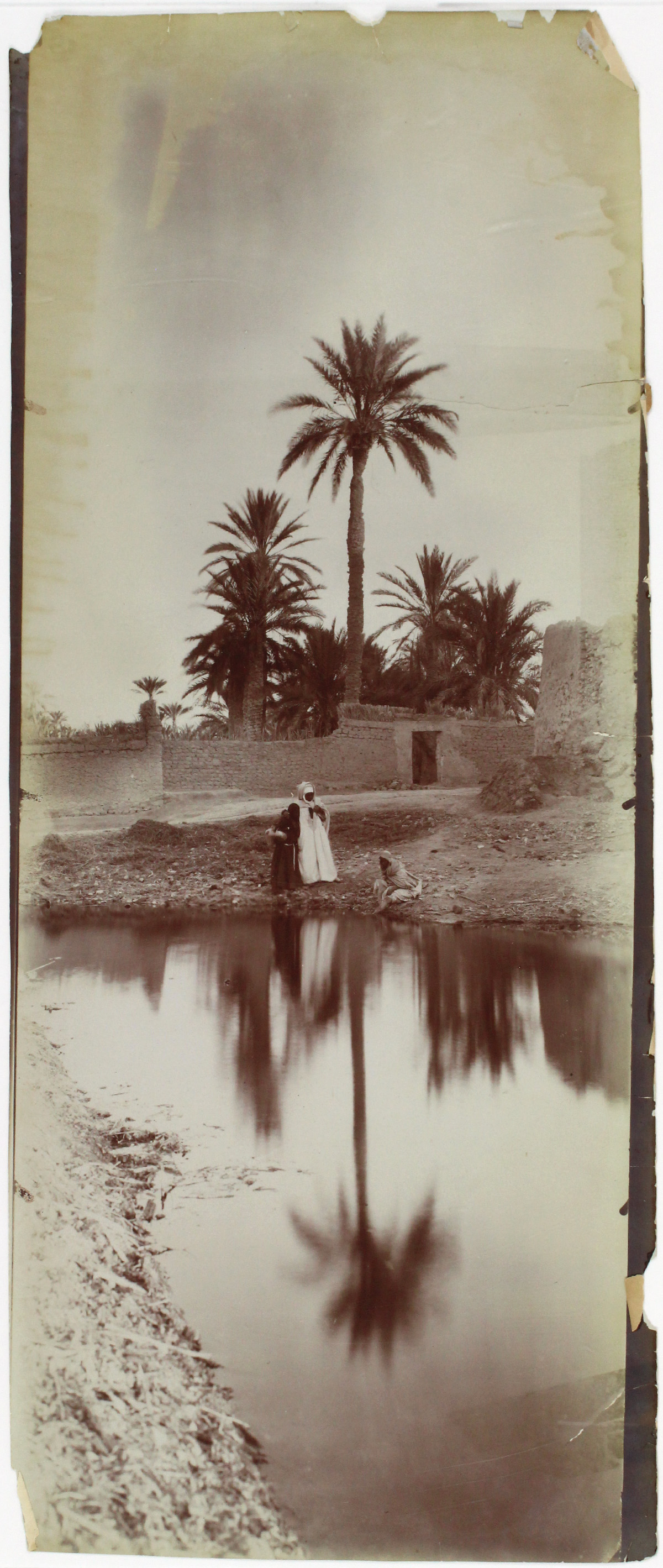


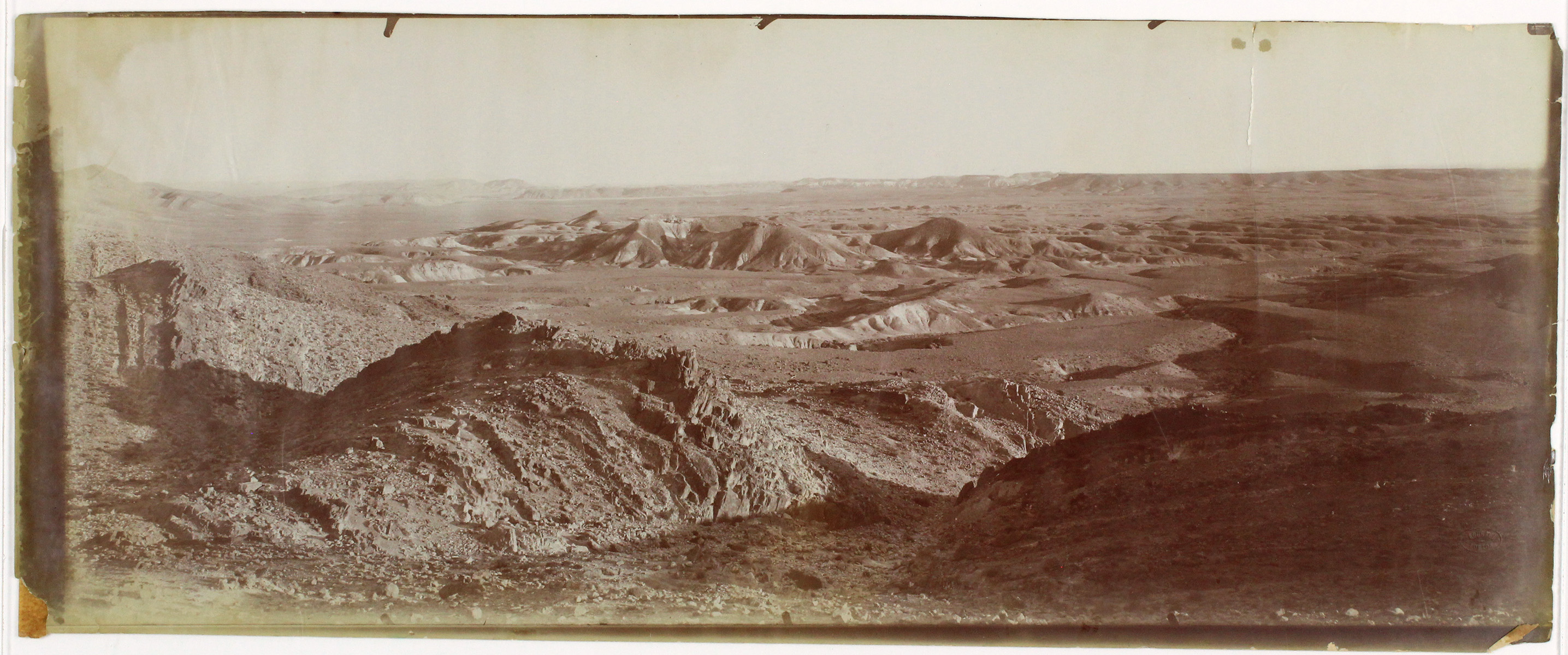
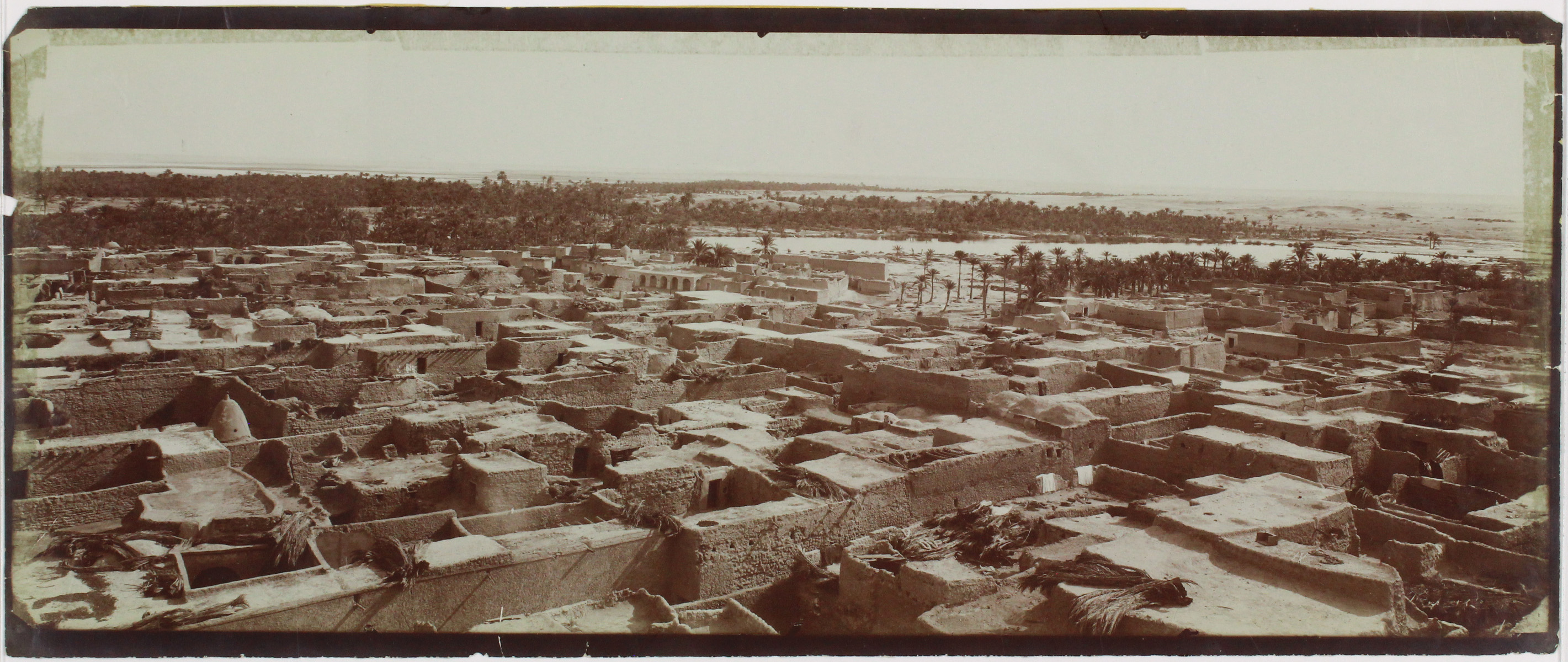
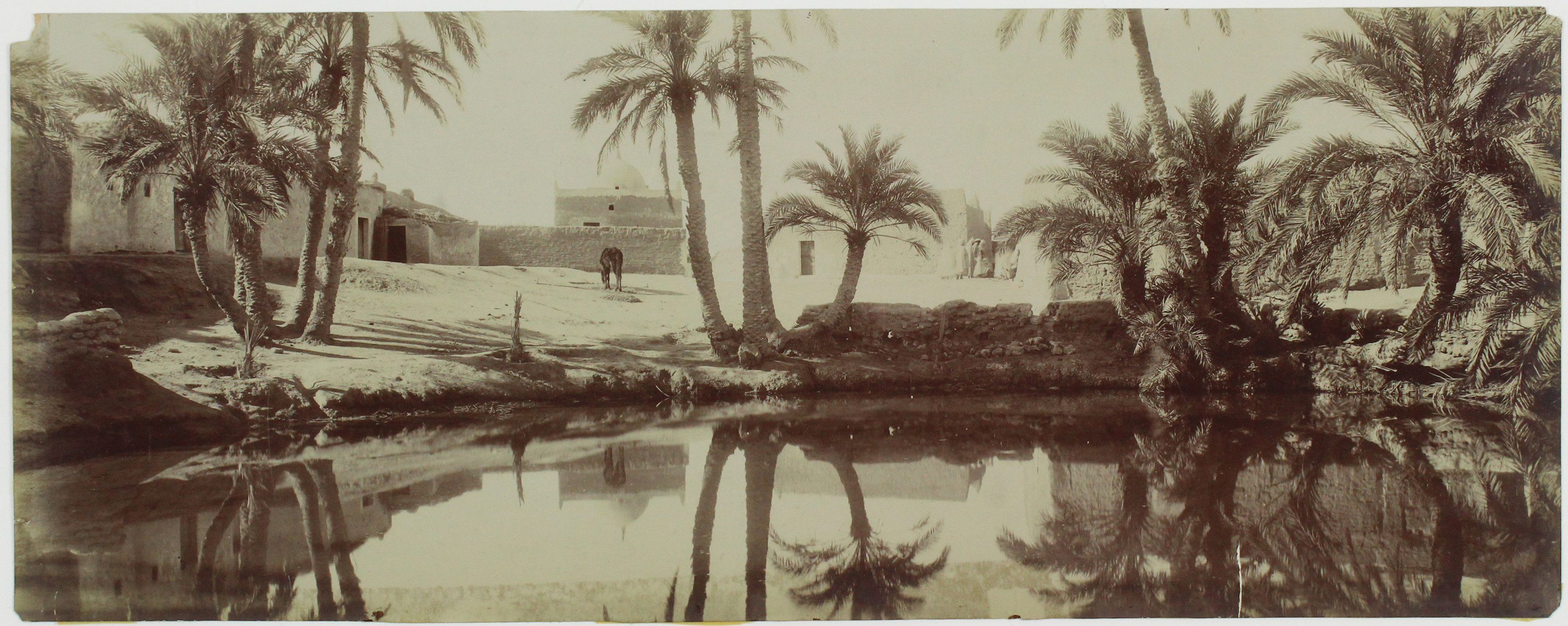
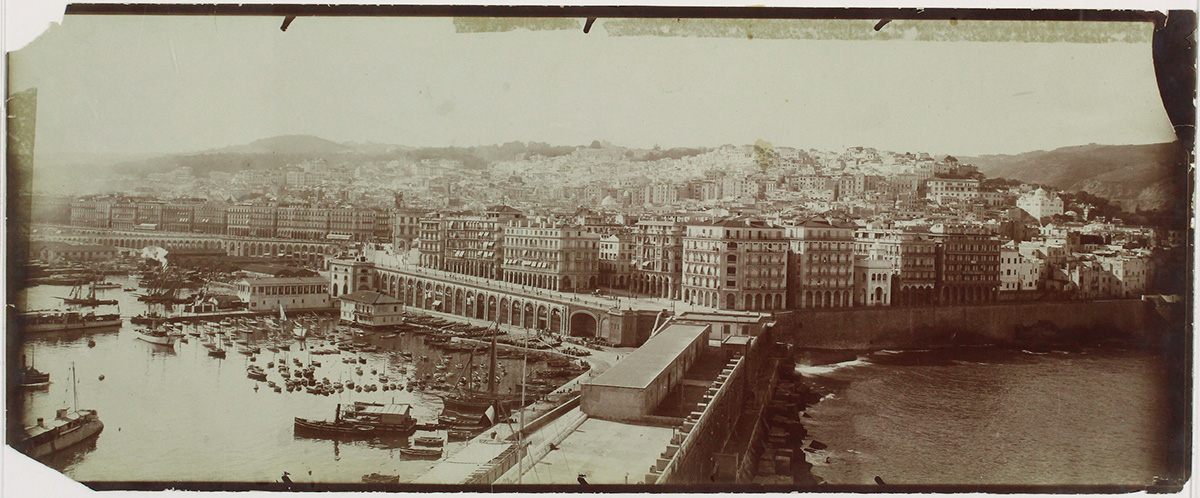
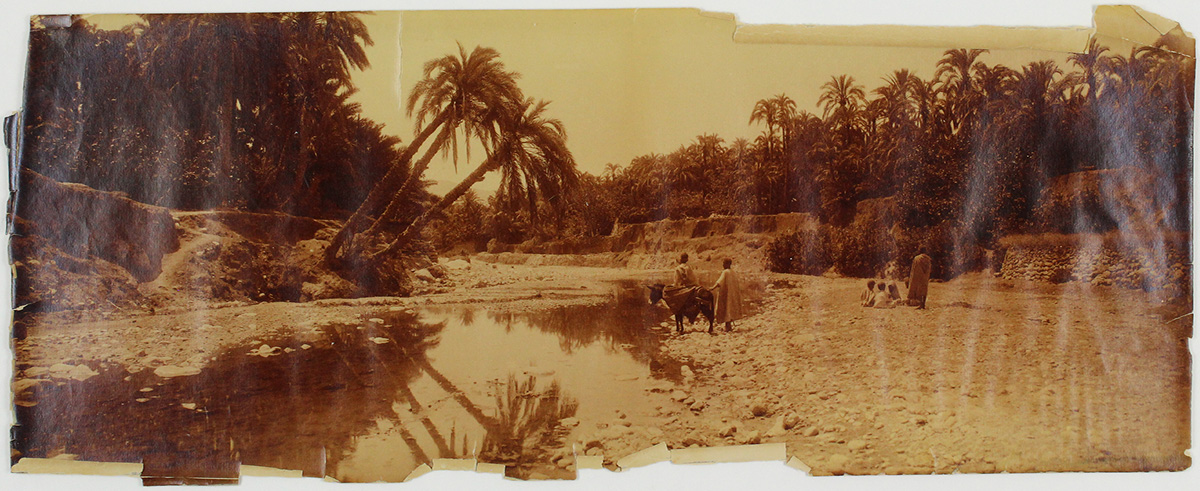
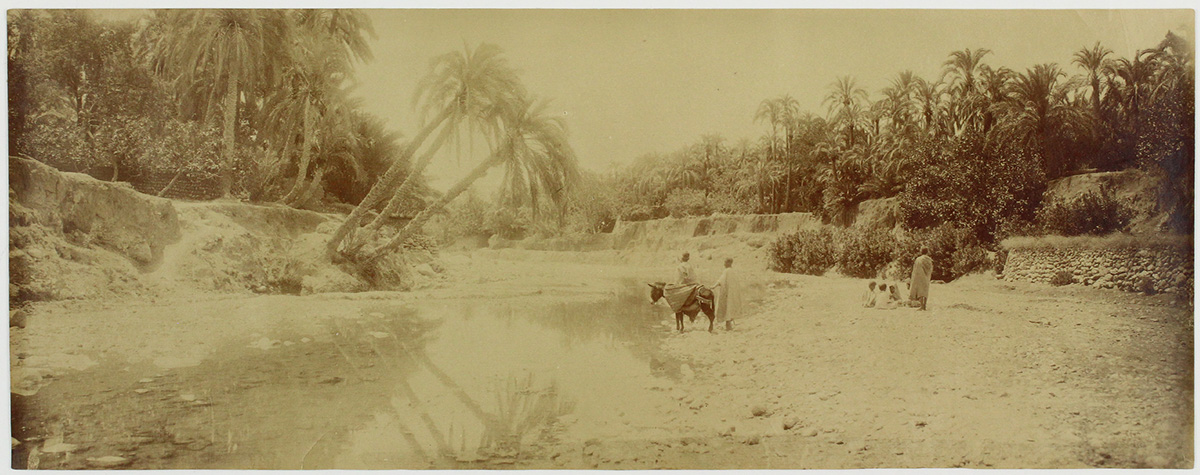
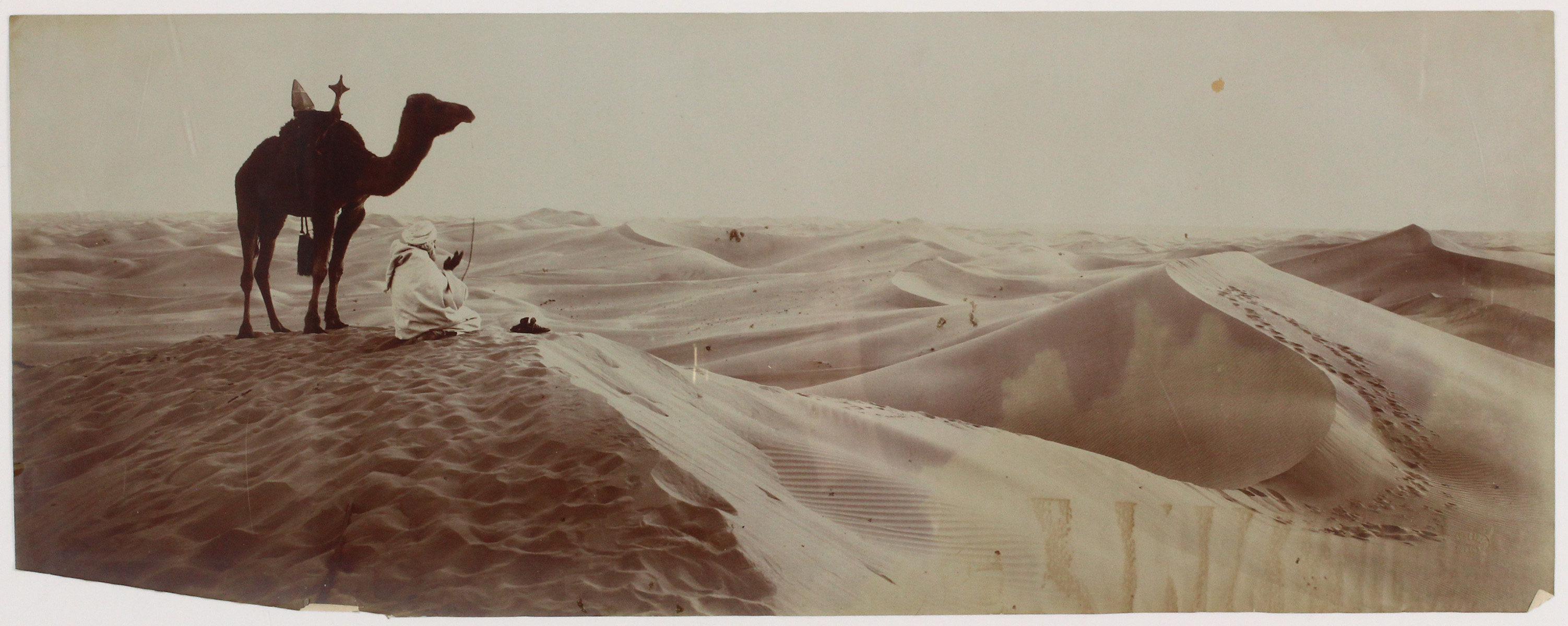
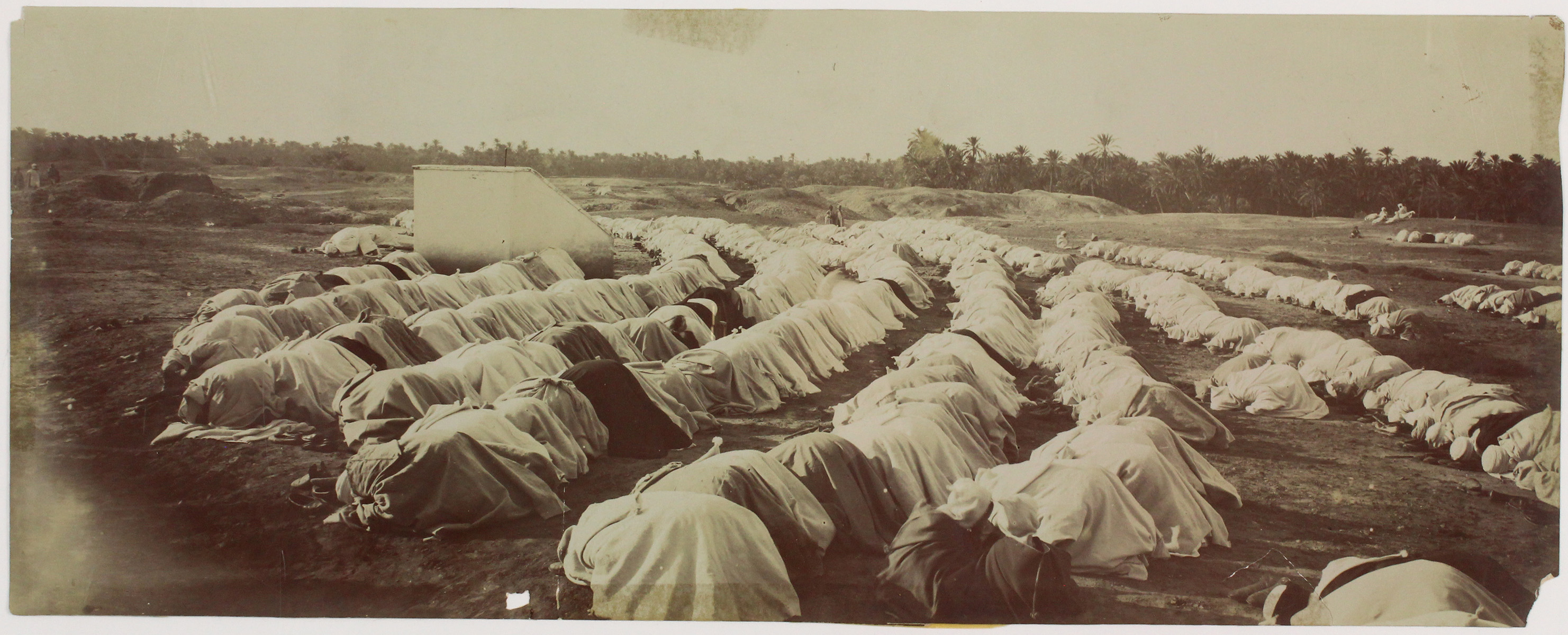
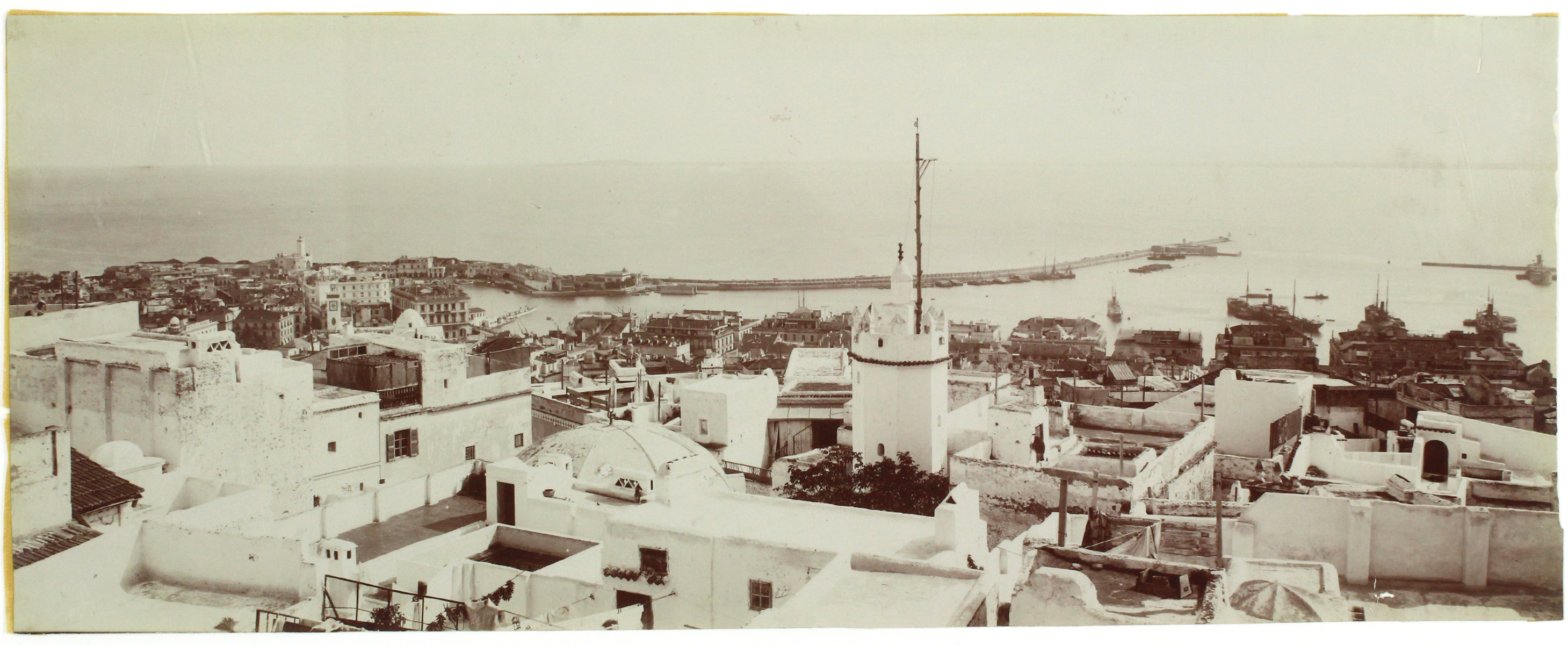
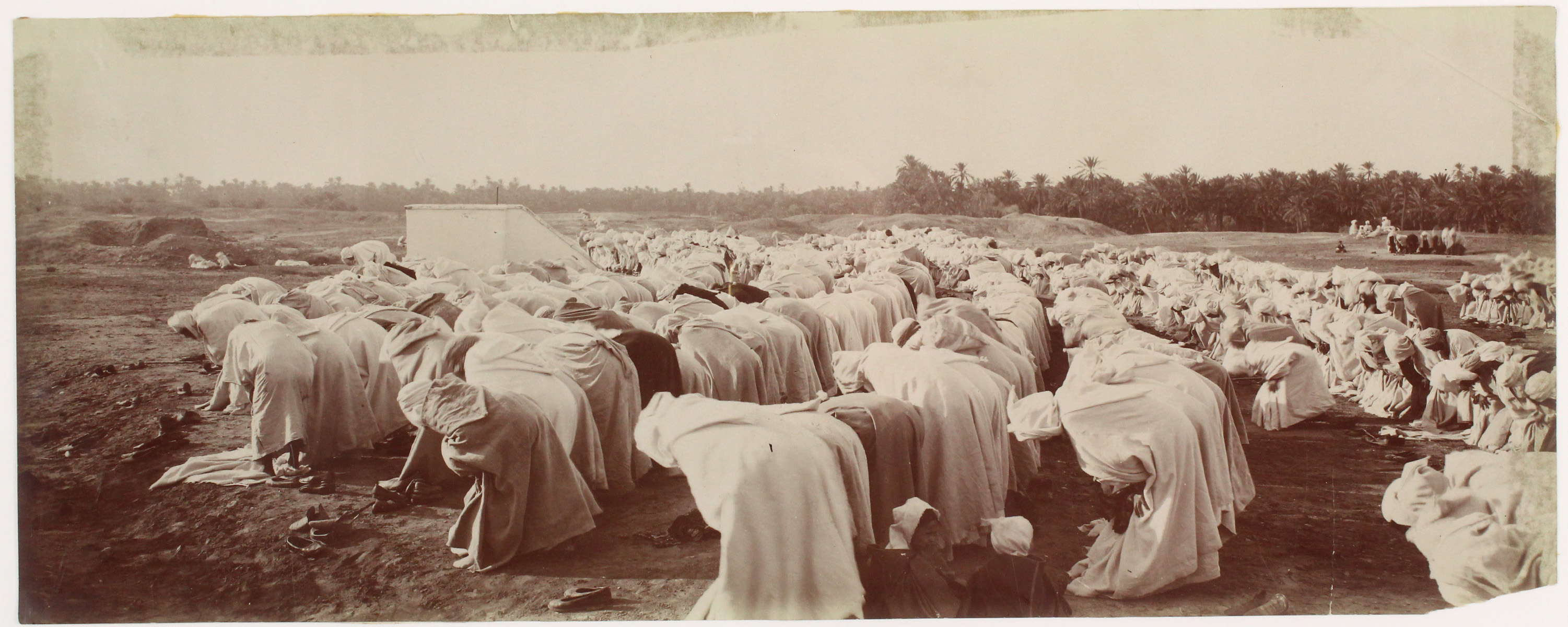
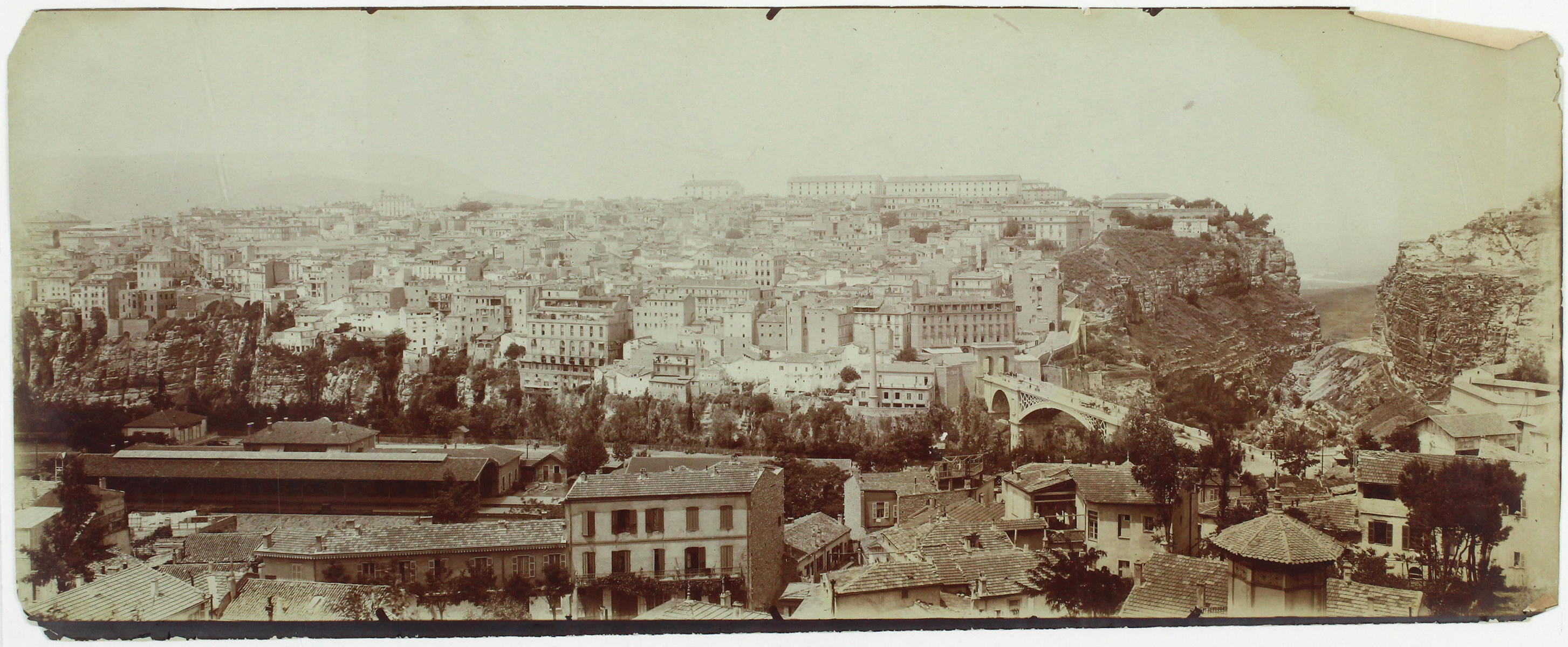
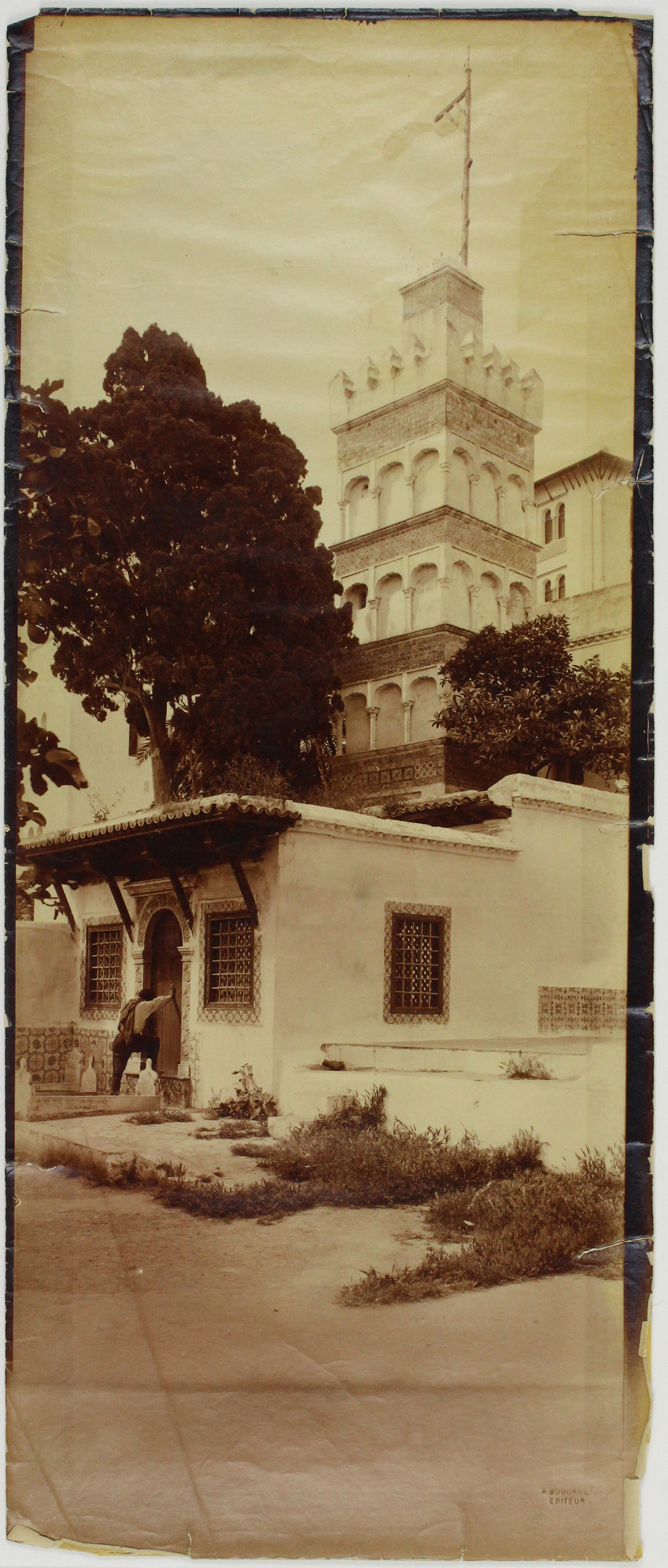
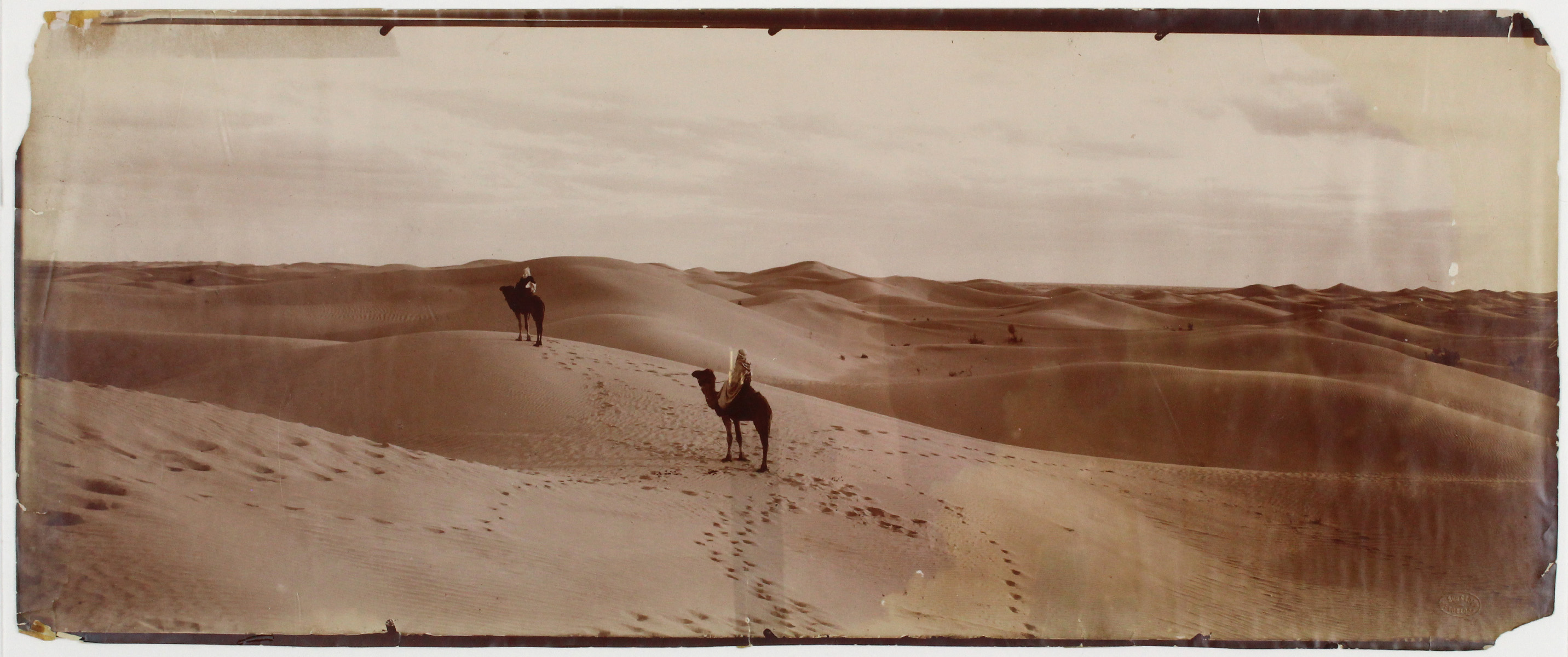
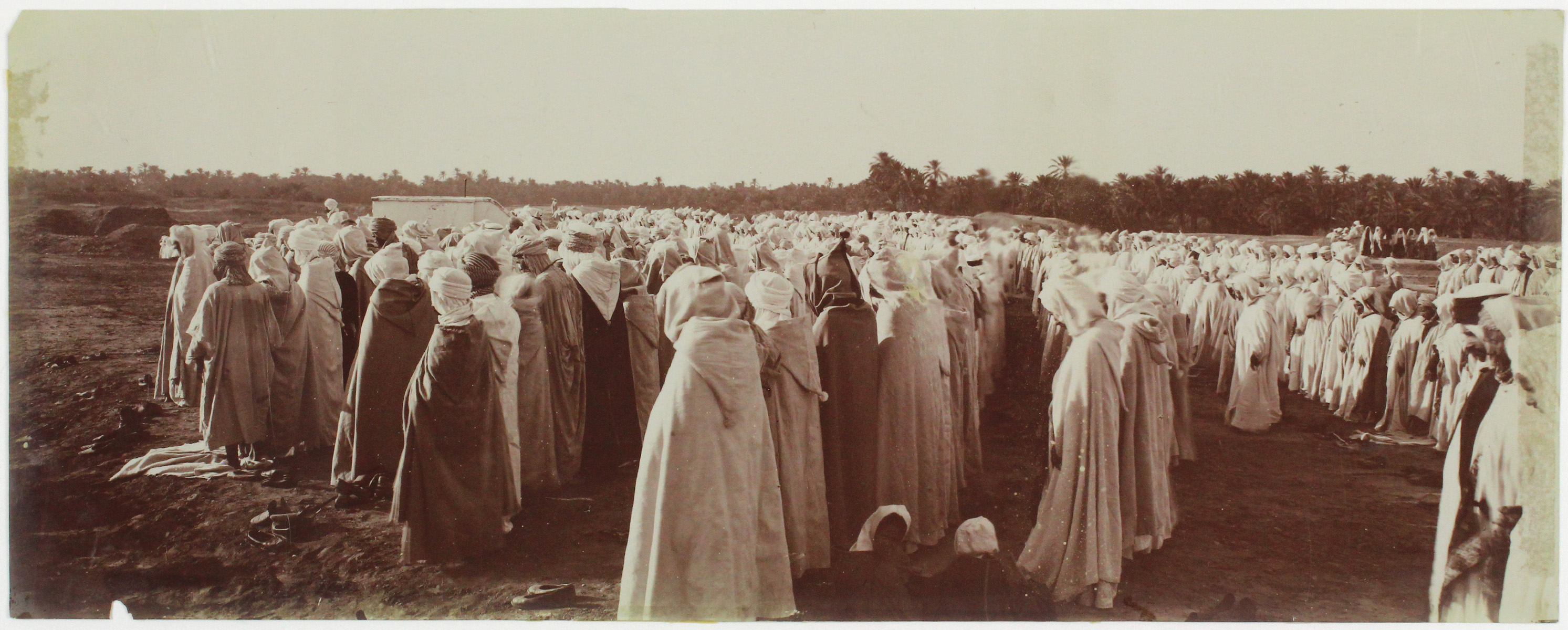
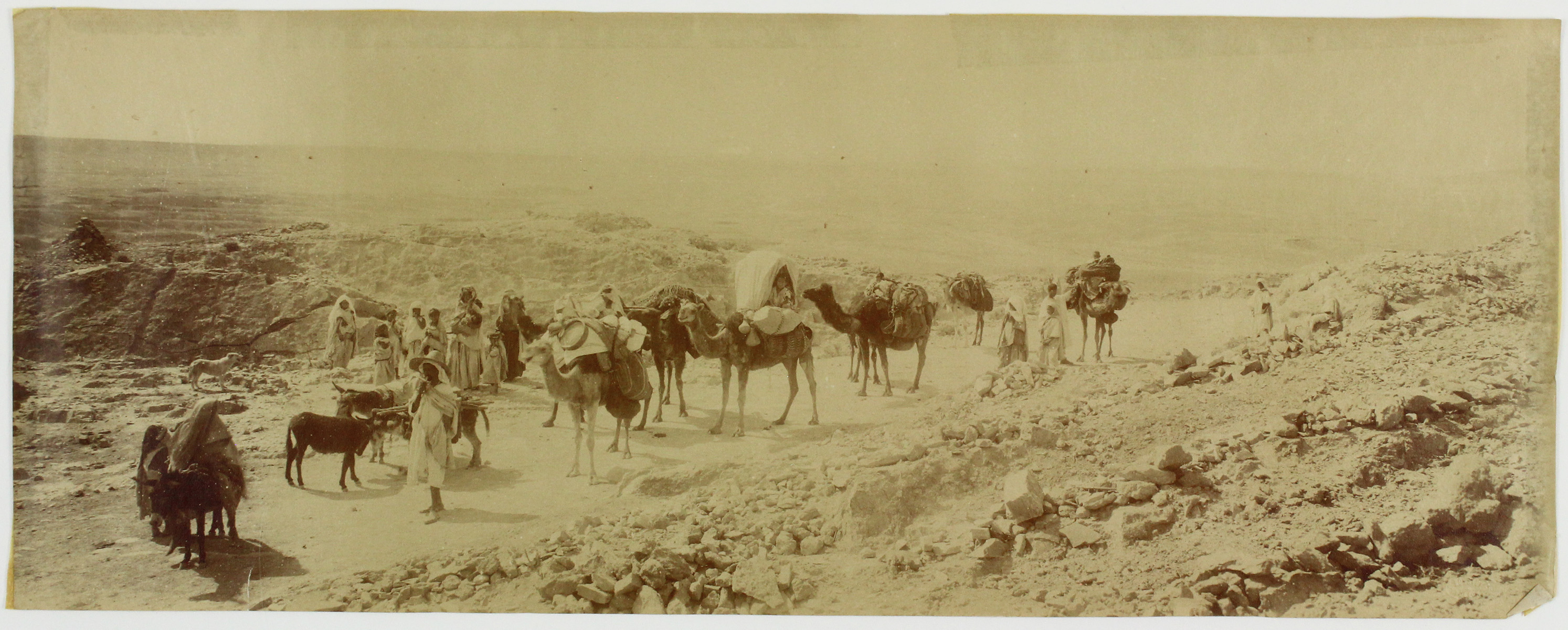
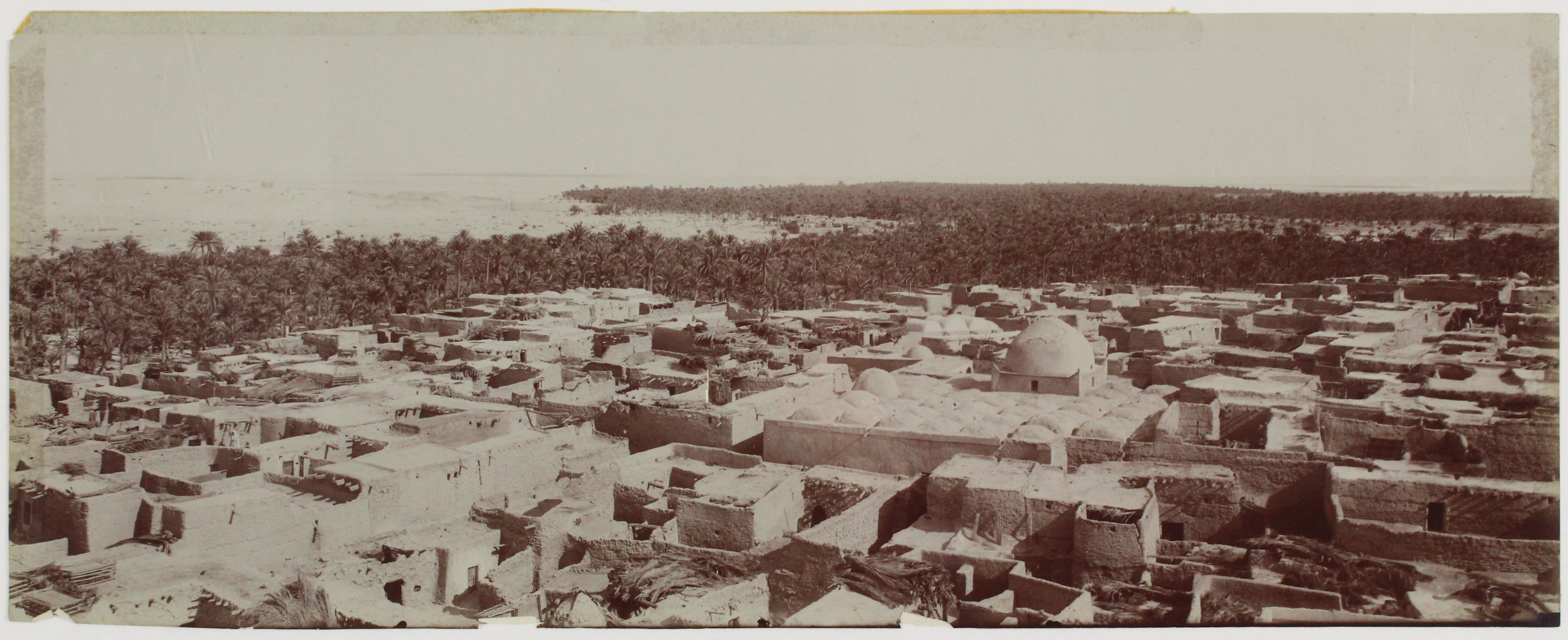





























(ORIENTALISM--ALGERIA) LEHNERT & LANDROCK; BOUGAULT (active 1880s-1910s
Suite of 29 stunning panoramic photographs by Lehnert & Landrock and Bougalt of exotic scenes in Algeria. With picturesque views of oases, desert caravans, encampments, topographic scenes, men praying, and more. Sepia-toned silver prints, 8 3/4x22 3/4 inches (22.2x57.8 cm.), most with handwritten notations, in pencil, on verso identifying the location or scene, and 22 with a small Bougault blind stamp in the lower right corner. Circa 1890-1915
Estimate $20,000 - 30,000
This rare suite of single-frame panoramic photographs richly illustrates the exoticism, rituals, customs and landscape of Algeria at a time when international travel was limited to the very wealthy or adventurous.
In the early 1900s "Orientalism," an idealized visual idiom that drew inspiration from the genre of Pictorialist photography, was introduced. The artistic community of European photographers who worked in North Africa routinely shot images that explored indigenous people as romantic figures. These same photographers apparently swapped or traded negatives. In this way, a clear understanding of authorship can be elusive. Primary photographers include the partnership of Rudolf Lehnert (Czech, 1878-1948) and Ernst Heinrich Landrock (Swiss, 1878-1966), in which Lehnert produced evocative photographs of Algeria and Tunisia; and Alexandre Bougault (active 1890s-1910s), a French editeur (publisher) who was also known for his stunning photographs in which subjects are beautifully arranged and lit.
According to Ken Jacobson's Odaliques & Arabesques: Orientalist Photography 1839-1925, "Some of Lehnert's dramatic desert compositions are very similar to scenes from the emerging early cinema." Dramatic views of men praying, bird's eye pictures of Algerian cities such as Biskra, picturesque views at a palm-tree lined oasis, and beautifully composed scenes of caravans and encampments figure prominently in the group. Although photographers employed high aesthetic standards, each was also capitalizing on a growing trade of commercial imagery, in which pictures were reproduced on postcards, newspaper, magazines, and travel books.
A photographer required considerable technical mastery required to successfully shoot in North Africa's challenging physical environment. Cameras were large and cumbersome; and the laborious act of processing and developing negatives occurred immediately, at the site, generally in a developing tent. Many of the photographs required careful planning in relation to compositional arrangement and the special qualities of natural light.
The original collector of these remarkable photographs was Theodore Stanichet, who was born in France in the early 1840s. Stanichet himself was a remarkable character and is described by family members as "a sailor", "an adventurer", "a world traveler", "a dancing master", "a fencing master" and "a saloon keeper in Brooklyn, NY." He traveled to Algeria, notably Biskra, where he apparently acquired the panoramas. The suite of photographs was given to Angelica (Gail) LaPasta, Theodore's granddaughter-in-law, as a wedding gift in 1910; by descent to her family.





